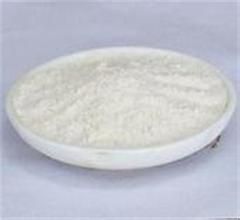

Precio FOB
Obtener el precio más reciente|
- Minimum Order
País:
China
N º de Modelo:
-
Precio FOB:
Lugar de origen:
-
Precio de pedido mínimo:
-
Cantidad de pedido mínimo:
-
Detalle de embalaje:
-
El tiempo de entrega:
-
Capacidad de suministro:
-
Tipo de pago:
-
Grupo de productos :
-
Persona de contacto Catherine
Suzhou, Jiangsu
Â
What is Konjac?
Konjac, also known as konjak, konjaku, konnyaku potato, devil's tongue, voodoo lily, snake palm, or elephant yam (though this name is also used for A. paeoniifolius), is a plant of the genus Amorphophallus. It is native to warm subtropical to tropical eastern Asia, from Japan and China south to Indonesia.
It is a perennial plant, growing from a large corm up to *5 cm in diameter. The single leaf is up to 1.3 m across, bipinnate, and divided into numerous leaflets. The flowers are produced on a spathe enclosed by a dark purple spadix up to *5 cm long.
The corm of the konjac is often colloquially referred to as a yam, although it bears no marked relation to tubers of the family Dioscoreaceae.
Â
What is Glucomannan?
Glucomannan is a water-soluble polysaccharide that is considered a dietary fiber. It is a hemicellulose component in the cell walls of some plant species. Glucomannan is a food additive used as an emulsifier and thickener. Products containing glucomannan, marketed under a variety of brand names, are also sold as nutritional supplements for constipation, obesity, high cholesterol, acne vulgaris and type 2 diabetes. Although there is some clinical support for potential health benefits, the U.S. Food and Drug Administration (FDA) has not approved any product containing glucomannan for the treatment of these medical conditions. Health Canada has authorized some products containing glucomannan for the purposes of appetite reduction, weight management, treatment of constipation and management of high cholesterol levels.
Glucomannan is also the main ingredient in shirataki noodles and konnyaku which are traditional Japanese foods. These products are made from the ground corm of the konjac plant. These natural products have been eaten in Japan for centuries. Because of the fiber content and health benefits, they are known as the "broom of the intestine" in Japan. They are now being marketed for weight loss and other health benefits in the United States and worldwide due to the low calorie count.
Â
Where isll Glucomannan be used for?
Glucomannan konjac supplement benefit for cholesterol, diabetes, and constipation, Amorphophallus konjac
Glucomannan is a water-soluble polysaccharide dietary fiber. It
is also a food additive used as an emulsifier and thickener. The
botanical name is Amorphophallus konjac.
Konjac contains more than ten kinds of amino acid required by
human body, microelement and unsaturated fatty acid, it is
effective in tumor resisting, blood pressure descending, blood
sugar descending and weight-losing.
| País: | China |
| N º de Modelo: | - |
| Precio FOB: | Obtener el precio más reciente |
| Lugar de origen: | - |
| Precio de pedido mínimo: | - |
| Cantidad de pedido mínimo: | - |
| Detalle de embalaje: | - |
| El tiempo de entrega: | - |
| Capacidad de suministro: | - |
| Tipo de pago: | - |
| Grupo de productos : | - |